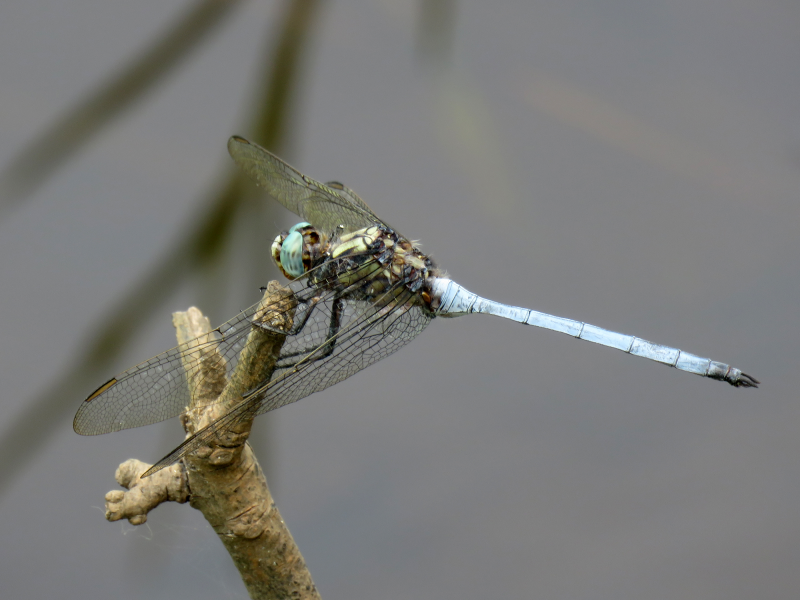The photo above (by Diana Russell) can be viewed in OdonataMAP here.
Find this species in the FBIS database (Freshwater Biodiversity Information System) here.
Family Libellulidae
Orthetrum robustum – ROBUST SKIMMER
Identification
Large size
Length reaches 58mm; Wingspan attains 86mm.
The largest Orthetrum species. Key identification features include long yellow pterostigmas, with a dark leading edge and broad dark brown shoulder patches on a paler grey-brown thorax. The abdomen is pale pruinose blue. This pruinosity may spread onto the thorax with age. Fully pruinose males can be identified in the hand by the distinctive shape of the secondary genitalia.
Slightly larger than the Long Skimmer (Orthetrum trinacria), but that species is very dark blue overall and does not have a tapered waist.
Generally similar to most other Orthetrum species in terms of colouration, but can be seperated by its considerably larger size and broad dark brown shoulder patches.
Click here for more details on identification.
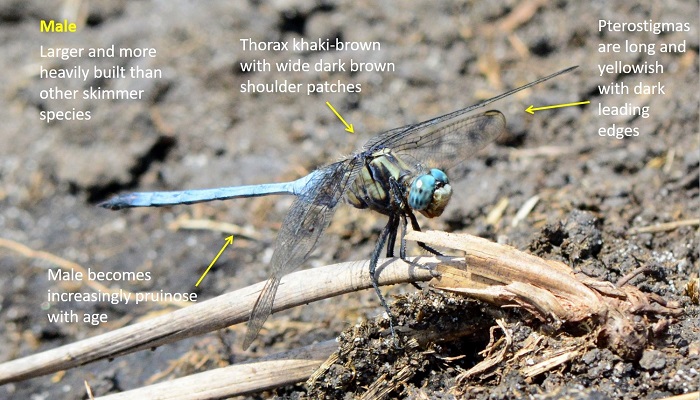
Near Kosi Bay, KwaZulu-Natal
Photo by Ryan Tippett
Habitat
Associated with still-water habitats, particularly marshes, floodplains and the verges of pans and lakes. Favours marshy ground, rich in grasses and sedge and often with open patches of muddy or sandy substrate. Regularly found where the water-side grass cover has been grazed short or trampled by large animals like hippo, cattle and buffalo etc. Less frequent in areas of tall grass.
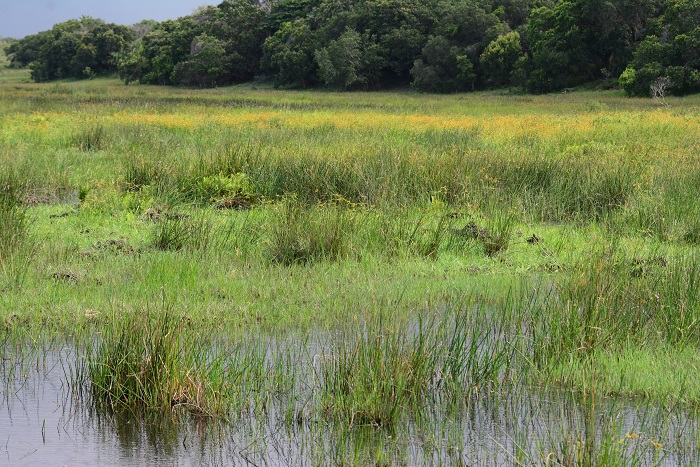
Photo by Ryan Tippett
Behaviour
Mostly sits low down over the ground or water. Hunts from a perch and frequently returns to the same spot. The flight is swift and powerful. Fairly confiding, but flies far once disturbed. Non-breeding individuals may be found away from the water in the surrounding woodlands where they hawk insects from bushes and trees.
Status and Conservation
Fairly common, but very localised. Increases in abundance, becoming more widespread locally during wet climatic cycles. During dry periods it retreats to larger, permanent water bodies. The IUCN Red List of Threatened Species, lists it as Near Threatened in South Africa, but as of Least Concern globally.
Only recorded from high quality habitats and is likely to be sensitive towards habitat degradation.
A large amount of the South African range of this species is protected within the iSimangaliso Wetland Park.
Distribution
Orthetrum robustum has a highly disjunct distribution in South-central and Southern Africa. There appear to be three main distribution centers. These are NE Zambia and neighboring Democratic Republic of the Congo. Northern Botswana and Namibia’s Caprivi Strip and finally the NE coastal plain of KwaZulu-Natal in South Africa and probably neighboring Southern Mozambique.
Restricted in South Africa to the coastal plain of NE-KwaZulu-Natal, reaching as far south as Richards Bay.
Below is a map showing the distribution of records for Robust Skimmer in the OdonataMAP database as at February 2020.
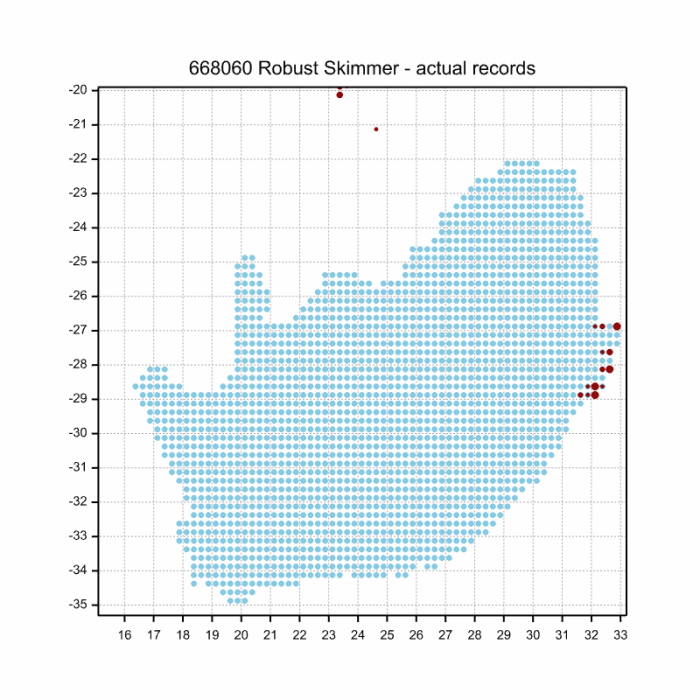
The next map below is an imputed map, produced by an interpolation algorithm, which attempts to generate a full distribution map from the partial information in the map above. This map will be improved by the submission of records to the OdonataMAP section of the Virtual Museum.
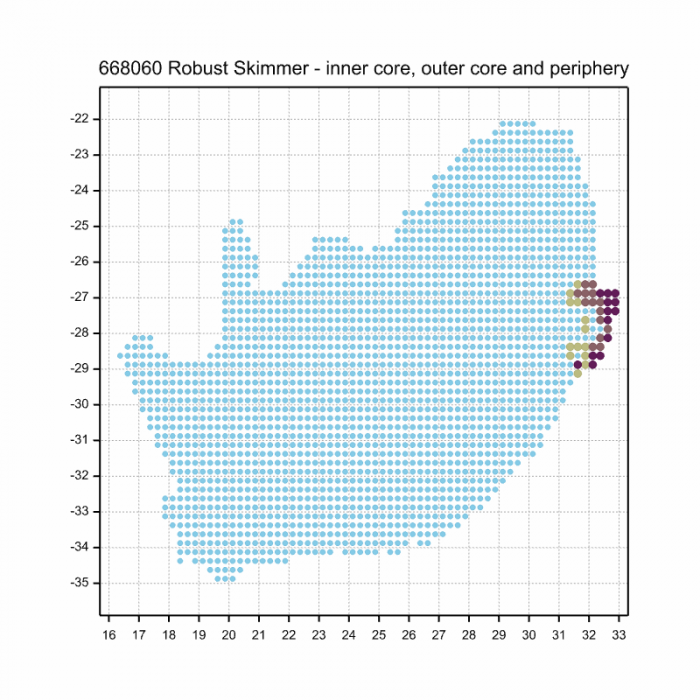
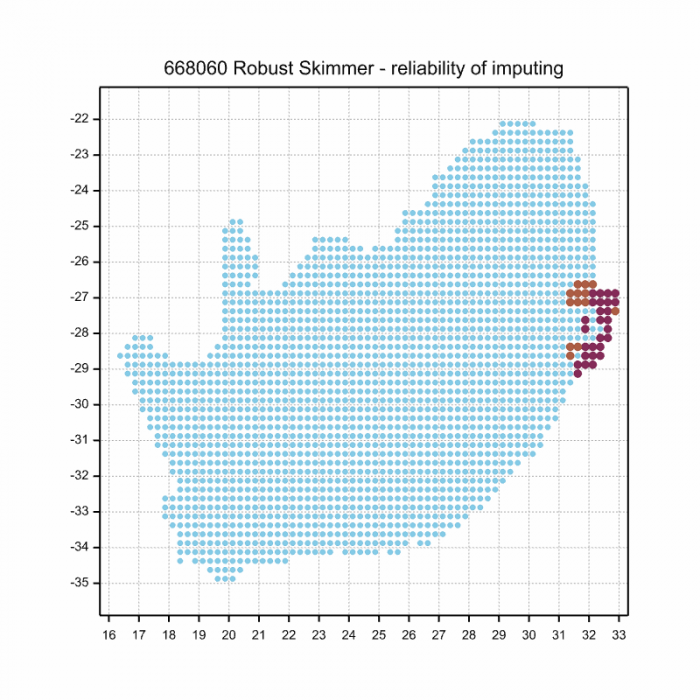
Ultimately, we will produce a series of maps for all the odonata species in the region. The current algorithm is a new algorithm. The objective is mainly to produce “smoothed” maps that could go into a field guide for odonata. This basic version of the algorithm (as mapped above) does not make use of “explanatory variables” (e.g. altitude, terrain roughness, presence of freshwater — we will be producing maps that take these variables into account soon). Currently, it only makes use of the OdonataMAP records for the species being mapped, as well as all the other records of all other species. The basic maps are “optimistic” and will generally show ranges to be larger than what they probably are.
These maps use the data in the OdonataMAP section of the Virtual Museum, and also the database assembled by the previous JRS funded project, which was led by Professor Michael Samways and Dr KD Dijkstra.

